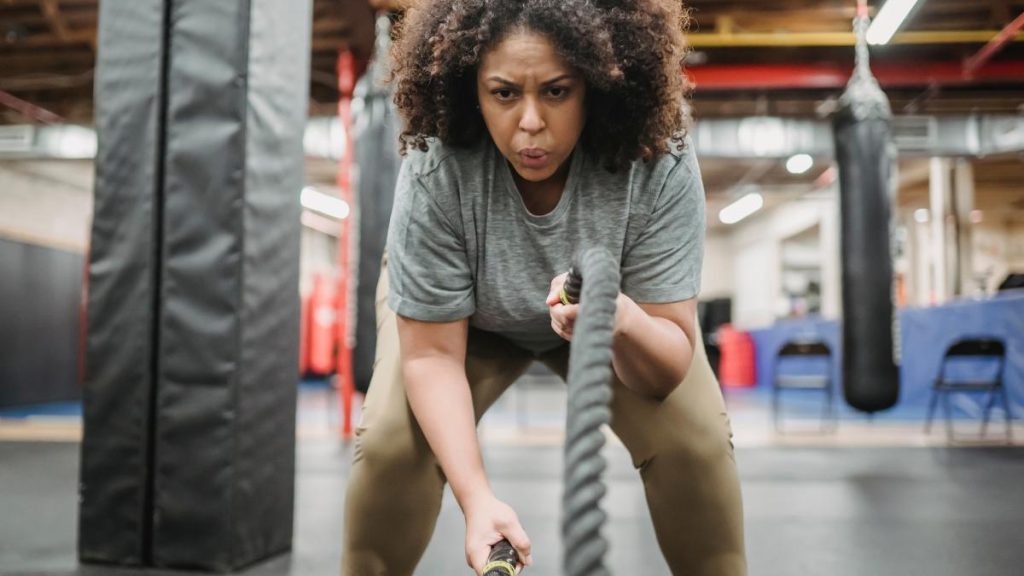High-Intensity Interval Training (HIIT) has become one of the most popular fitness trends, and for good reason. It’s a time-efficient, effective workout strategy designed to burn fat, build muscle, and improve cardiovascular health—all within a fraction of the time you might spend doing traditional exercises. In this ultimate guide to HIIT workouts, we’ll break down everything you need to know, from its benefits to workout tips and how to get started.
What is HIIT?
HIIT stands for High-Intensity Interval Training, a method of exercise that alternates between short bursts of intense activity and periods of lower-intensity recovery or rest. The intense bursts push your heart rate up and get you working at or near your maximum effort, while the rest periods allow your body to recover before the next burst of activity.
A typical HIIT workout lasts 10 to 30 minutes, making it perfect for busy people who want to stay fit.
The Benefits of HIIT Workouts
- Burns More Calories in Less Time: One of the most well-known benefits of HIIT is that it can burn a significant number of calories quickly. Studies show that HIIT can burn 25-30% more calories than other forms of exercise like cycling or weightlifting within the same period.
- Increases Metabolic Rate: HIIT helps increase your metabolism during the workout and for hours afterward, a phenomenon called excess post-exercise oxygen consumption (EPOC). This means your body continues burning calories even after your workout has ended.
- Boosts Heart Health: HIIT improves cardiovascular health by increasing your heart rate and strengthening your heart muscle. It’s also been shown to lower blood pressure and reduce cholesterol levels, making it an excellent choice for those looking to improve heart health.
- Builds Muscle While Burning Fat: Unlike steady-state cardio, which primarily burns calories, HIIT also helps preserve or build muscle mass. Combining strength-building exercises and short recovery periods forces your muscles to work harder, increasing strength and endurance over time.
- Time Efficiency: HIIT workouts can be done in as little as 10 minutes, making them an excellent option for people with busy lifestyles who struggle to find time for longer workouts.
- Improves Insulin Sensitivity: Research has shown that HIIT improves insulin sensitivity, which can help the body better regulate blood sugar levels. This is particularly beneficial for people with insulin resistance or type 2 diabetes.
How to Get Started with HIIT Workouts
HIIT is flexible and can be adapted to suit various fitness levels and preferences. Here are some steps to get started:
1. Choose Your Activity
HIIT can be applied to a wide range of exercises. Some popular options include:
- Sprinting or cycling
- Jump rope
- Bodyweight exercises like burpees, squats, lunges, and push-ups
- Strength training exercises using kettlebells or dumbbells
Whatever exercise you choose, the key is to perform it at maximum intensity during the “work” phase.
2. Determine Your Work-to-Rest Ratio
The work-to-rest ratio in a HIIT workout determines how intensely you exercise versus how long you rest. A beginner ratio is 30 seconds of high-intensity exercise followed by 30 seconds to 1 minute of rest. More advanced exercisers may increase the work period to 45 seconds or more and shorten rest periods.
Examples of common HIIT work-to-rest ratios:
- Beginner: 20 seconds work / 40 seconds rest
- Intermediate: 30 seconds work / 30 seconds rest
- Advanced: 40 seconds work / 20 seconds rest
3. Start with a Warm-up
Before diving into your HIIT session, warming up your muscles to reduce the risk of injury is essential. Spend 5-10 minutes performing dynamic stretches or light cardio, like jogging or jumping jacks, to get your heart rate up and loosen up your muscles.
4. Perform the Workout
Here’s an example of a beginner HIIT workout:
- Jumping jacks (30 seconds)
- Rest (30 seconds)
- Bodyweight squats (30 seconds)
- Rest (30 seconds)
- Burpees (30 seconds)
- Rest (30 seconds)
- Mountain climbers (30 seconds)
- Rest (30 seconds)
Repeat this circuit 3-4 times for a complete workout. As you become more comfortable with HIIT, you can increase the work periods, add more rounds, or include more challenging exercises like kettlebell swings or sprints.
5. Cool Down
After your HIIT workout, take a few minutes to cool down. This helps your heart rate return to normal and reduces muscle soreness. Stretching your major muscle groups (legs, arms, and core) or performing light cardio (like walking) can effectively finish the workout.
HIIT Workout Tips for Success
- Focus on Form: HIIT is intense, but that doesn’t mean you should sacrifice form for speed. Performing exercises with poor form can lead to injury. Ensure you’re using the proper technique, especially during squats or burpees.
- Listen to Your Body: Because HIIT is physically demanding, listening to your body is essential. If you’re new to exercise or feel fatigued, start with shorter workouts or increase your rest periods. As your endurance builds, you can gradually reduce rest times and increase the intensity.
- Mix It Up: Variety is key in HIIT. Switch up the exercises you do or the interval durations to keep your body challenged and avoid plateaus.
- Track Progress: Record your workouts, times, and improvements. This will help you stay motivated and give you a clear picture of your progress.
Comparing HIIT to Other Workouts
While HIIT offers numerous benefits, it is essential to compare it with other workouts to see how it fits into your fitness routine.
- Steady-State Cardio: Activities like jogging or cycling at a moderate pace for an extended period can be practical for endurance and weight loss. However, it takes longer to burn the same number of calories as with HIIT.
- Strength Training: Lifting weights builds muscle and increases metabolic rate, critical for long-term fat loss. HIIT, combined with bodyweight or strength exercises, can provide similar benefits in less time.
- Yoga or Pilates: These workouts focus on flexibility, balance, and core strength, essential to overall fitness. HIIT can complement these practices by adding their lack of cardiovascular and strength training components.
Is HIIT Right for You?
HIIT is an excellent workout option for people who want to lose fat, improve cardiovascular health, and build muscle—all in a short time. However, it might not be ideal for everyone, especially those with joint issues or pre-existing health conditions.
If you’re new to fitness or have health concerns, consult your doctor before starting a HIIT program. You can also begin with low-impact variations of exercises (e.g., walking instead of sprinting) and gradually build intensity.
Key Takeaways
- HIIT workouts are highly effective for burning fat, building muscle, and improving cardiovascular health in a short amount of time.
- The benefits of HIIT include increased calorie burn, improved heart health, and greater time efficiency compared to traditional workouts.
- Getting started with HIIT is easy; choose your exercises, determine your work-to-rest ratio, and warm up and cool down.
- Focus on proper form, listen to your body, and track your progress to maximize your results.
Whether you’re a beginner or an experienced athlete, incorporating HIIT into your routine can help you achieve your fitness goals faster and more efficiently. With its flexibility and variety, HIIT can be adapted to any fitness level, making it a go-to workout for people on the go.
Ready to try HIIT? Lace-up your sneakers and dive into your first session today!
Read Next…
- How to Set Up a Progress Tracking System for the Best Health and Fitness Results
- Weekly Workout Plan: What Do Experts Suggest for Beginners?
- Best HIIT Workout for Maximum Results
- Stretching 101: How to Warm Up Before Workouts
- The Ultimate Guide to HIIT Workouts: Tips, Benefits, and How to Get Started




